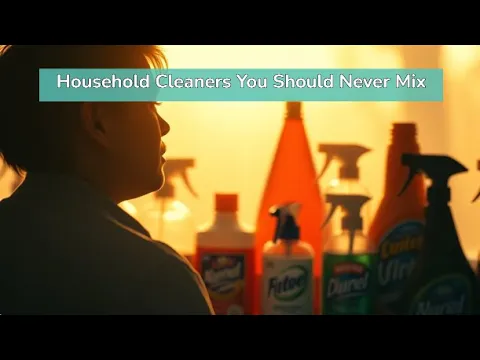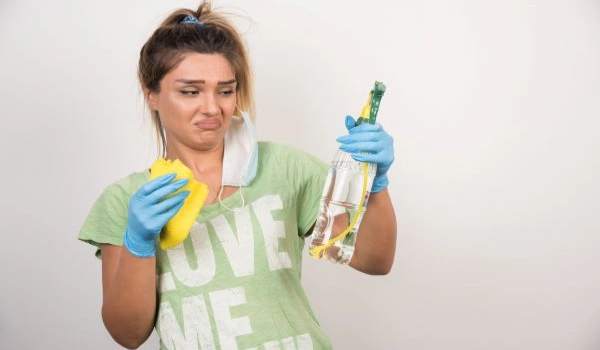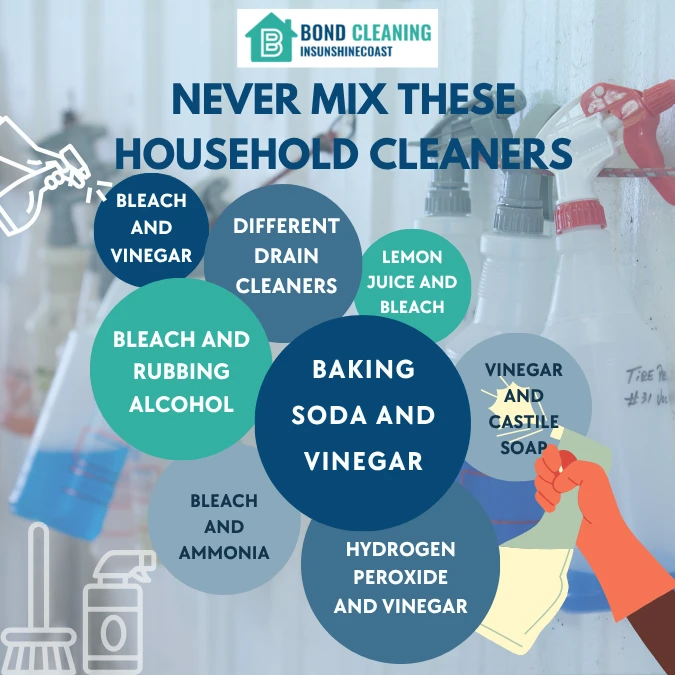
10 Household Cleaners You Should Never Mix
Household cleaning is a routine task in most homes. It helps keep the space fresh, tidy, and safe. However, mixing the wrong products can pose serious health risks. Many individuals believe that using two strong cleaners can increase cleaning results. On the contrary to the belief, mixing certain cleaners can produce harmful gases or a corrosive reaction.
Some combinations can cause skin burns or lead to respiratory problems. Even some products that seem harmless on their own may become dangerous when used together. Knowing what never to mix is important because it maintains safety in the home while completing the job. This blog will show you ten common household cleaners that should never be mixed. Being cautious with cleaning hacks with the products helps avoid serious mistakes and health hazards.
1. Bleach and Vinegar
Both bleach and vinegar are effective cleaning agents used in many households. Bleach is best for whitening and disinfecting, while vinegar works well to cut the grease and remove mineral buildups. However, mixing these produces toxic chlorine gas, which can irritate eyes and lungs. Even small amounts of this gas can be irritating in confined spaces, such as bathrooms. Always use them separately and in a well ventilated area.
Tips: Do not use vinegar to clean grout and natural stone floors.
2. Bleach and Ammonia

Ammonia is a powerful cleaner often used to remove stains and grease. Bleach, on the other hand, is used for disinfection. This is one of the most dangerous combinations. When these two are combined, they create chloramine gases, which can cause eye irritation, shortness of breath, and are toxic to the lungs.
In severe cases, exposure can lead to chemical pneumonia. If you are exposed to this gas for an extended period, you may experience difficulty breathing. Expert bond cleaning Sunshine Coast teams will never use such hazardous combinations. They are aware of the risks associated with chemical reactions.
3. Baking Soda and Vinegar
Baking soda is alkaline, and vinegar is acidic. This mixture may look harmless. It often creates a fizzing effect that many think is powerful for cleaning. But it loses cleaning power once the fizz settles. The resulting mix becomes mostly water with salt and carbon dioxide. It loses the cleaning power of both ingredients.
This mixture might work for unclogging drains and garbage disposal, but it’s not effective for deep cleaning tasks, such as remove grease, moisture buildup gunk and crayon marks. Using these separately gives better results for different surfaces and types of dirt or grime.
4. Different Drain Cleaners
Drain cleaners are made with strong chemical bases, either acidic or alkaline. Using two different brands or types of drain cleaners in the same drain can lead to chemical reactions. It may release toxic fumes, or even result in a small explosion.
Reputable teams providing trusted bond cleaning Sunshine Coast services never mix drain cleaners. Instead, they use safer and effective solutions along with proper tools to deliver exceptional results.
5. Hydrogen Peroxide and Vinegar
Hydrogen peroxide is often used to disinfect surfaces. Vinegar is used for stain removal and deodorising. When these two are combined, they form peracetic acid. It is corrosive to many surfaces and should never be used in sealed containers or small spaces.
It can harm the skin, eyes, and respiratory system. Even spraying them one after another can be risky if there is no rinse in between. When cleaning surfaces, try to use hydrogen peroxide and vinegar separately. Avoid layering them even on the same surface.
Tips: For safe cleaning, always rinse the first solution completely before applying the next.
6. Bleach and Rubbing Alcohol
Rubbing alcohol is used for disinfecting and cleaning electronics or glass. However, mixing it with bleach creates chloroform, a highly toxic chemical compound. Chloroform can lead to nausea, dizziness, or even unconsciousness. It is also known to damage organs over prolonged exposure. It may seem like a strong disinfectant mix, but it is extremely risky. The fumes are not easily detectable and can cause harm before anyone realises. Even the smallest reaction can result in toxic exposure that affects everyone in the room. These reactions can damage surfaces, harm health and create environmental pollution. The results may not be immediately visible. But continued exposure is dangerous. Understanding these risks helps prevent long term damage to homes and people.
Tips: Keep these two items stored separately. Also, avoid using them near each other.
7. Vinegar and Castile Soap
Castile soap is a natural, oil based cleaner. It works well for cleaning floors, dishes, and personal use. Vinegar is an acid that reacts with the soap’s base. When mixed, it breaks the soap apart, creating a curdled, sticky mess. This not only reduces cleaning power but also leaves a film on surfaces. Professionals carrying out efficient bond cleaning tasks on the Sunshine Coast know how to keep these areas separate. They use vinegar to rinse soap residue, not mix it directly.
8. Lemon Juice and Bleach
Lemon juice has natural acidic properties and is often used for its pleasant fragrance and ability to break down grease. However, like vinegar, when lemon juice is mixed with bleach, it releases chlorine gas. The gas has a strong, unpleasant odour and causes burning in the eyes, throat, coughing, and irritation to the lungs. This combination may seem like a good idea due to the natural cleaner appeal of lemon, but it can turn dangerous instantly.
Tip: Always handle bleach alone and never mix it with any acidic substances.
9. Bleach and Toilet Bowl Cleaners
Toilet bowl cleaners often contain acids, such as hydrochloric acid, to remove brown stains. When these are combined with bleach, the reaction produces poisonous chlorine gas. And also create dangerous fumes. These fumes can be very irritating and hazardous. This gas can linger in small bathroom spaces, making it hard to breathe. Symptoms such as coughing, headaches, and chest tightness can appear suddenly. Safe bond cleaning Sunshine Coast avoids combining such products during bathroom cleaning.
Tips: Cleaners are trained to use each product individually, allowing for proper drying or rinsing time before using another.
10. Dish Detergent and Disinfectants
Some dishwashing liquids may contain ammonia or acidic ingredients. When these are mixed with disinfectants like bleach, a chemical reaction occurs. This can create toxic fumes or reduce the effectiveness of both products. It can also leave harmful residues on dishes or surfaces. Using one product at a time and rinsing thoroughly is the safest method. Dish detergents and disinfectants should be stored separately to avoid accidental mixing or unsafe cleaning practices.
11. Safe Cleaning Habits
Maintaining safe cleaning routines is essential to protect your health and ensure effective results. Whether you’re doing daily cleaning or preparing for bond cleaning in Sunshine Coast, following proper methods can help prevent accidents and damage.
- Always read the product label before using any cleaner to understand correct usage and safety precautions.
- Avoid the assumption that stronger means better. Use only the recommended amount for best results.
- Use one product at a time to prevent harmful chemical reactions.
- Rinse surfaces thoroughly before applying a different product, especially when switching between types of products.
- Store cleaning products in a cool, dry place to reduce the risk of accidental mixing or spoilage.
- Follow expert recommended methods, as many professionals providing bond cleaning Sunshine Coast do, to ensure safe and thorough cleaning.
Never Mix These Household Cleaners

Wrapping Up
Mixing household cleaners may seem harmless. But it can lead to health issues and property damage. Learning about unsafe combinations is important. Following safe practices can avoid accidents. Use products wisely and never mix them without research.


